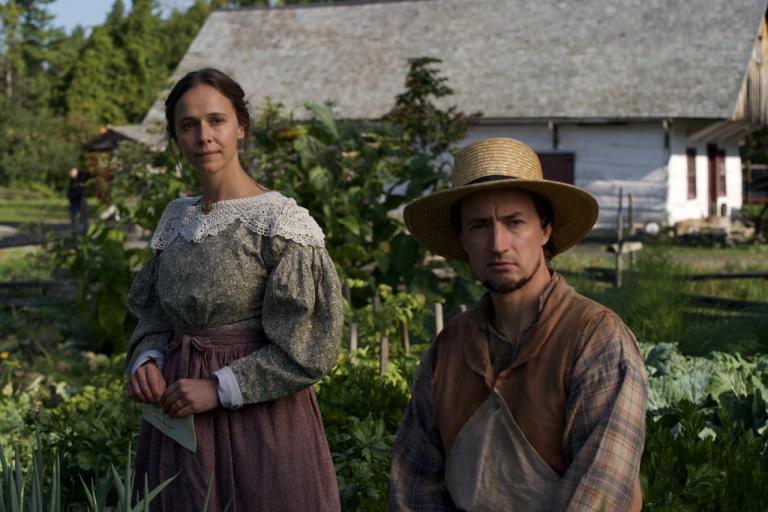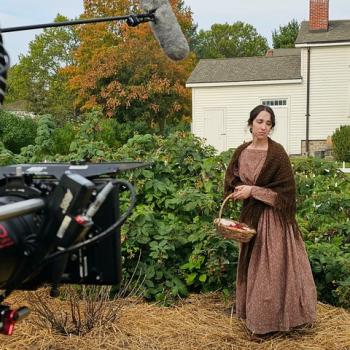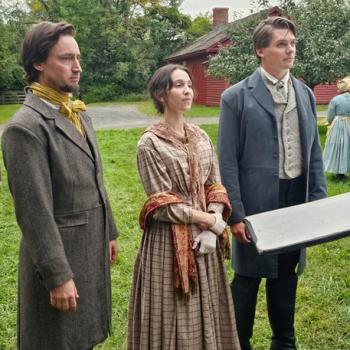
Two new articles appeared today on the website of the Interpreter Foundation:
“Mormon’s Narrative Strategies to Provide Literary Justice for Gideon,” written by Nathan J. Arp
Abstract: Although unable to write more than a hundredth part of his people’s history, Mormon seemingly found the time and plate-space to deliver literary justice on behalf of Gideon, who suffered a martyr’s death at the hand of the wicked Nehor. This article applies a literary approach buttressed by evidence from the Book of Mormon to suggest that Mormon intentionally supplied tightly-controlled repetitive elements, like the repetition of names, to point the reader to discover multiple literary sub-narratives connected by a carefully crafted network of themes running under the main narratives of the scriptures. The theories espoused in this work may have begun with the recognition of the reader-arresting repetition of Gideon’s name in Alma 6:7-8, but driven by scriptural data points soon connected Gideon with Abinadi, the Ammonites, and others. The repetitive and referential use of the moniker Nehor, Gideon’s murderer, on various peoples by Mormon seemed to connect thematically and organically to a justice prophesied by Abinadi. In parallel with the theme of justice laid upon the Nehor-populations, evidence is marshaled to also suggest that Mormon referenced the place-name of Gideon to intentionally hearken back to the man Gideon. Following the role of Gideon, as a place, we propose Mormon constructed a path for the martyr Gideon via proxy to meet the resurrected Lord in Bountiful. Mormon’s concern for the individual and his technique for rewriting Gideon’s story through proxy ultimately symbolizes the role Christ’s atoning power can take in each of our lives to save us.
“Interpreting Interpreter: Gideon’s Justice,” written by Kyler Rasmussen
This post is a summary of the article “Mormon’s Narrative Strategies to Provide Literary Justice for Gideon” by Nathan J. Arp in Volume 58 of Interpreter: A Journal of Latter-day Saint Faith and Scholarship. All of the articles may be seen at https://interpreterfoundation.org/category/summaries/. An introduction to the Interpreting Interpreterseries is available at https://interpreterfoundation.org/interpreting-interpreter-on-abstracting-thought/.
The Takeaway: Arp argues that Mormon’s treatment of the story of Gideon—and subsequent use of the name Gideon in his writings—includes a carefully crafted subtext that emphasizes the justice of God, promotes peacemaking, and outlines a path to salvation in Christ.

Yesterday and today represent an important anniversary, and it has not gone wholly unnoticed:
“Video: Restoration Ongoing Since the Angel Moroni Appeared to Joseph Smith, Historians Say”
There is also a connection with the anniversary in this article, from Time: “How Mormonism Went Mainstream”
And, given the subject matter of his latest book, I expect that even this article was timed to coincide with “Moroni Day”: “The faithful scholar: Richard Bushman said he finds no contradiction between faith and scholarship”

I’m delighted to report that, upon returning home today, I found that a copy had arrived at my house of Ronald K. Esplin, Dean C. Jessie, Brent M. Rogers, Gerrit J. Dirkmaat, and Andrew H. Hedges, eds., The Brigham Young Journals, Vol. 1, April 1832 – February 1846 (Provo, UT: Religious Studies Center and BYU Press, Brigham Young University, in cooperation with the Brigham Young Center Foundation, Sandy, Utah, and Deseret Book Company, Salt Lake City, Utah).
We are fortunate to live in a time when wonderful resources like these are being made publicly and widely available.

Something terrible and frightening occurred to a member of our family this past Sunday, in a far distant place. The news came out of the blue. It was fragmentary. For a while, too, my wife and I were out of cell phone range, and we were left to imagine what might be happening and how bad things were. In such times, when we feel powerless and can only pray, it is very good that we can, in fact, pray.
I won’t give details here, out of respect for the privacy of certain family members and because, quite frankly, there are malicious readers of this blog whom I don’t trust not to seek to exploit such events in order to mock and wound me and in order to torment people for whom I care deeply. Happily, though, although the event was genuinely horrific, its effects have turned out about as well as they possibly could have. One might indeed say, as I do say, that our prayers in this instance have been answered. There are still challenges ahead and possible problems on the horizon, but we will somehow cope with them. And we continue to pray and will continue to do so.
Some others who became aware of what had happened joined their prayers with ours, and I want to express my gratitude to them for that, and for their kindness to us. It’s satisfyingly good to belong to a community of good and faithful people, as we are fortunate to do.
And it came to pass that he said unto them: Behold, here are the waters of Mormon (for thus were they called) and now, as ye are desirous to come into the fold of God, and to be called his people, and are willing to bear one another’s burdens, that they may be light;
Yea, and are willing to mourn with those that mourn; yea, and comfort those that stand in need of comfort, and to stand as witnesses of God at all times and in all things, and in all places that ye may be in, even until death, that ye may be redeemed of God, and be numbered with those of the first resurrection, that ye may have eternal life—
Now I say unto you, if this be the desire of your hearts, what have you against being baptized in the name of the Lord, as a witness before him that ye have entered into a covenant with him, that ye will serve him and keep his commandments, that he may pour out his Spirit more abundantly upon you? (Mosiah 18:8-10)
The Rev. Dr. Martin Luther King spoke often of “the beloved community.” I’m blessed to belong to one such.













